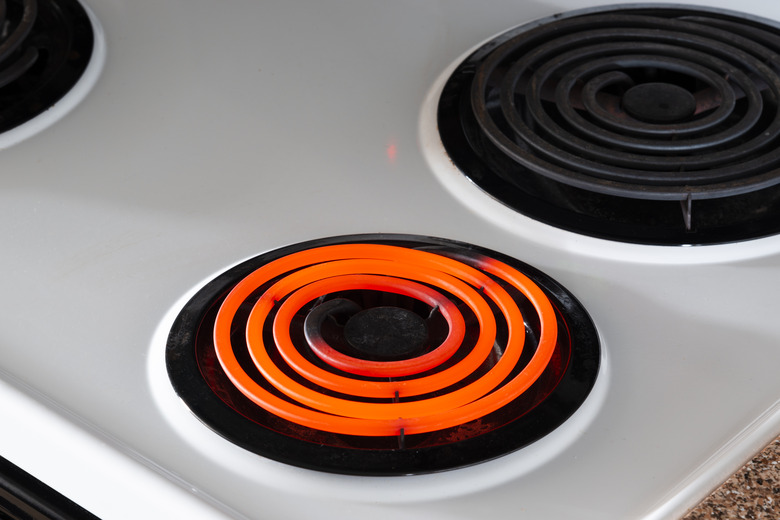How To Clean Electric Stove Elements
One reason for cleaning stove burners is to prevent the smell from caked-on food from wafting through the kitchen, but there's an even more important one. Drops of charred greases and oils create hot spots that can damage the burner. If you remove the burners periodically and wash them in the sink, your nose will appreciate it as much as the burner does.
Remove Oven Element for Cleaning
Remove Oven Element for Cleaning
It's important to remove the oven elements rather than trying to clean them on the stove, because you can do a more thorough job. You can also avoid getting water inside the stove, where it can short circuit the electrical connections. If you've never removed a burner before, you may think it's a complicated operation involving removing screws and disassembling the stove top, but it's actually as easy as pulling a plug.
Before you remove a burner, the power must be off, so if you aren't sure if the burner controls are working properly, unplug the stove or turn off the breaker controlling it. Also, make sure the burner is cool.
Locate the burner connection, which is identifiable by a notch in the stove top, and grasp the burner across from the connection. Tilt it upward about 20 degrees — but no more than 30 degrees — and pull it toward you with both hands. This will free the burner prongs from the stove receptacle and voilà, it will come out. Just reverse this procedure to reinstall it when it's clean.
Wash Burner in the Sink
Wash Burner in the Sink
Once the burner is free, you can get all of it wet as long as you let it dry thoroughly before replacing it. The best way to clean it, according to Proline Range Hoods, is to wipe it down with soap and water using a kitchen scrubby if you need more abrasive scrubbing action. You can use the same dish soap you use for the dishes.
Over time, stove burners develop a coating of black carbon, and this usually doesn't come off with soap and water. You can remove it with tin foil, though, as long as the burner is dry. Just rub down the burner with foil in the direction of the coils, and it will look as good as new in a few minutes.
Baking Soda Paste Also Works
Baking Soda Paste Also Works
Another cleaning option, suggested by Lifehacker, is to make a paste of baking soda and water and use that to clean the burners. This is an effective way to dissolve and remove solidified grease, and it's also a good solution for cleaning the inside roof of the oven, where greases and oils accumulate.
A thorough rubbing with baking soda paste will remove most baked-on deposits, but some need a little extra effort. Rather than putting more elbow grease into the operation than necessary, just spread the paste on the gunk, give it 20 minutes, then wipe it off with a damp rag. If you're looking for the best way to clean the oven, this method is high on the list, because baking soda is nontoxic and has disinfectant and deodorizing properties.
After cleaning a stove element, you want to make sure it's dry before you reinstall it, so let it sit for several hours — ideally overnight — in a drying rack before putting it back in the stove.
